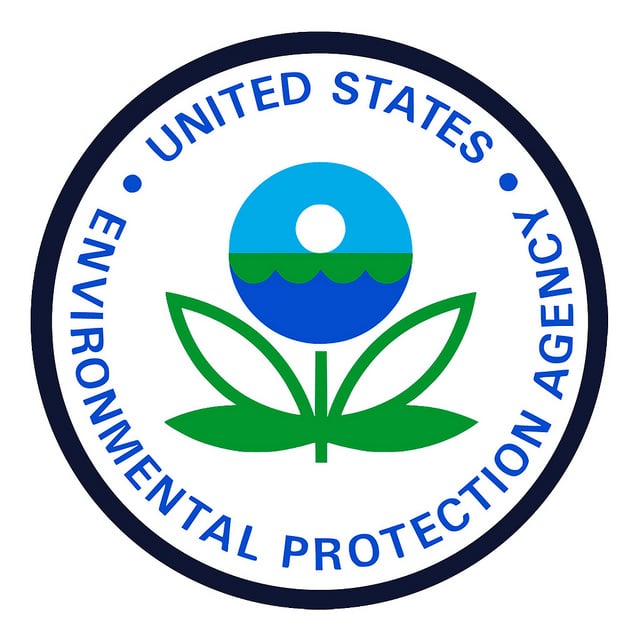The US environmental Protection Agency (EPA) continues to narrow its enforcement focus in order to follow Trump administration priorities. I recently wrote about EPA’s May 2025 statement of new enforcement policies (I wrote about that memo HERE). Now, EPA has announced further changes, to align its activities with the President’s Executive Order “Fighting Overcriminalization in Federal Regulations” (EO 14294). The remainder of this note summarizes these changes.
Audit, Compliance and Risk Blog
EPA narrows criminal enforcement to follow administration priorities
Posted by Jon Elliott on Fri, Sep 05, 2025
Tags: EPA, Environmental Policy, Environmental Compliance, EPA Regulations, EPA Standards, Trump Administration, Environmental Health and Safety, Environmental Protection Agency, EPA enforcement
The Trump Administration has issued its budget proposal for federal Fiscal Year (FY) 2026 (October 1, 2025 through September 30, 2026), including a 54% cut in the Environmental Protection Agency (EPA) budget, from $9.1 billion in FY 2025, to $4.16 billion for FY 2026. Many of the cuts apply to grant programs, and the proposal would cut staffing by 9%, from 14,130 full-time-equivalent employees (FTE) to 12,856. Readers should note that these cuts are comparable to those proposed by President Trump during his first term; EPA’s actual annual budget depends on that adopted by Congress (or a continuing resolution in lieu of an adopted budget). The remainder of this note summarizes EPA’s proposed FY2026 budget, including proposed reductions, drawn from EPA’s “Budget in Brief” (68 pages) and “Justification of Appropriation Estimates” (736 pages).
Read More
Tags: EPA, RCRA, tsca, Clean Air Act, Environmental Policy, Climate, EPA Regulations, EPA Standards, Trump, Trump Administration, Climate Reporting
SEC ends legal defense of climate-related disclosure requirements for public companies
Posted by Jon Elliott on Thu, May 15, 2025
On March 27, 2025 the US Securities and Exchange Commission (SEC) voted to stop defending rules adopted in 2024 (during the Biden administration) that would have required selected “public companies” (i.e, listed on national securities exchanges) to provide “climate-related disclosures for investors” in their registration statements and annual reports. SEC had stayed these rules’ effectiveness after being sued by two energy companies, which were later joined by other plaintiffs as well as state and nonprofit supporters of the rules. The latest SEC decision ends the agency’s defense in that litigation.
Read MoreTags: SEC, Environmental Policy, Climate, ESG, Environmental Compliance, Risk Management, Sustainability Reporting, Climate Disclosure, Climate Risk
EPA announces 31 reconsiderations and revisions toward Trump administration priorities
Posted by Jon Elliott on Tue, Mar 18, 2025
On March 12, the US Environmental Protection Agency (EPA) announced “31 historic actions in the greatest and most consequential day of deregulation in U.S. history.” These actions move to reconsider, and likely reverse, actions from the Biden administration as well as earlier EPA actions dating back to at least 2009. These actions are summarized in a general press release, and accompanied by more than 20 additional releases announcing specific actions; most involve the Clean Air Act (CAA). EPA links these initiatives to President Trump’s latest executive orders (EOs) and policy initiatives (I wrote about the EOs HERE and HERE). In earlier notes I addressed many of the regulatory and policy actions that will now be reconsidered. )
Read MoreTags: Environmental, EPA, Clean Air Act, Clean Energy, Environmental Policy, CCA, Deregulation, Manufactoring
Environment and Climate Change Canada publishes Phase 1 reporting guidelines for Federal Plastics Registry
Posted by Jon Elliott on Mon, Feb 24, 2025
Canada has established a goal of zero plastic waste by 2030, and has established a variety of regulatory and informational programs to pursue that goal. As part of these effort, Environment and Climate Change Canada (ECCC) has established the Federal Plastics Registry (FPR), along with accompanying regulations requiring reporting by targeted producers of plastic packaging, electronic and electrical equipment, and single-use or disposable products. These entities’ reporting requirements expand annually in three “phases,” beginning with Phase 1 reports starting with selected 2024 data due by September 29, 2025. (I wrote about ECCC’s proposal to establish the FPR, HERE). The remainder of this note summarizes Phase 1 requirements and identifies Phase 2-4 targets.
Read More
Tags: Environmental risks, Environmental, climate change, Environmental Projects, Environment, Environmental Policy, Climate, plastics, Environmental Compliance, Plastic Waste
Trump's first day executive orders and memoranda reversing Biden environmental initiatives
Posted by Jon Elliott on Thu, Feb 20, 2025
Since re-entering office, President Trump has moved quickly to reverse many of President Biden’s environmental policies; actions include a flurry of Executive Orders (EOs) that reverse or cancel his predecessors EO-based and other environmental initiatives. The remainder of this note summarizes changes presented in the initial EOs.
Read MoreTags: Environmental, Environment, Environmental Policy, Joe Biden, Policy Change, Trump Administration
During 2024, at least five states considered legislation to enact “Climate Superfund” laws targeting fossil fuel companies, applying “polluter pays” principles enshrined in the US federal Superfund law (Comprehensive Environmental Response, Compensation and Liability Act (CERCLA of 1980) and its many state counterparts. At least two states enacted such laws – Vermont and New York. The rest of this note provides brief summaries of these laws.
Read MoreTags: Environmental risks, Environmental, Greenhouse Gas, climate change, Environmental Projects, Environment, Environmental Policy, Climate, environmental law, environmental protection, Environmental Compliance
EPA further limits uses of carbon tetrachloride and perchloroethylene
Posted by Jon Elliott on Fri, Jan 10, 2025
The Toxic Substances Control Act (TSCA) includes procedures for the Environmental Protection Agency (EPA) to evaluate risks presented by existing chemicals using the latest scientific information – incorporating information developed after a chemical entered use in the US. Based on these reviews, EPA updates its regulatory requirements, ranging from labeling-only through use restrictions up to and including bans from further distribution and use. (I summarized these review requirements HERE). On December 18, 2024, EPA published restrictions in the Federal Register, for carbon tetrachloride (CTC) and perchloroethylene (PCE), based on its hazard reviews for those chemicals. The rest of this note discusses these new restrictions.
Tags: Environmental risks, Environmental, EPA, tsca, Environmental Projects, chemical safety, Environment, Environmental Policy, Chemical Safety Board, Hazardous Chemicals, Environmental Compliance, EPA Regulations, EPA Standards
EPA adopts management requirements for equipment containing HFCs
Posted by Jon Elliott on Thu, Jan 02, 2025
Effective December 10, 2024, the US Environmental Protection Agency (EPA) adopted rules for the management of hydrofluorocarbons (HFCs) potentially released from equipment during maintenance or other services,
.. These rules support US efforts to implement the 2016 Kigali Amendment to the United Nations-sponsored Montreal Protocol on Substances that Deplete the Ozone Layer (which I wrote about HERE), and codified in the December 2020 coronavirus relief bill (American Innovation and Manufacturing Act of 2020 (AIM Act; which included dozens of unrelated provisions within its 5,593 pages). EPA adopted over-arching HFC phase-down rules in September 2021 (I wrote about them HERE), and continues to adjust and refine their requirements. These latest rules appear in a 191 page document in the Federal Register, finalizing (with revisions) most provisions in a proposal issued in October 2023 (which I wrote about HERE).The remainder of this note summarizes EPA’s new rules, which impose requirements using authority under the Clean Air Act (CAA) and the Resource Conservation and Recovery Act (RCRA).
Read MoreTags: Environmental risks, Environmental, EPA, Environmental Projects, Environment, Environmental Policy, Environmental Compliance
EPA issues National Strategy to Prevent Plastic Pollution
Posted by Jon Elliott on Mon, Dec 30, 2024
On November 21, 2024 the Environmental Protection Agency (EPA) published its “National Strategy to Prevent Plastic Pollution.” This Strategy finalizes a draft issued in May 2023 (which I wrote about HERE). EPA notes that over the last 20 years, the global annual production of plastic products and generation of plastic waste have both more than doubled, and are projected to triple again by 2060. North America both produces and consumes roughly 19% of global plastics. To address these issues, the Strategy identifies a set of voluntary actions intenraftded to reduce the volumes of plastic wastes that end up disposed or discarded within the US. EPA describes these measures, and the agency’s related activities, as “an ambitious, equitable approach to reduce and recover plastics and other materials.” The remainder of this note summarizes the 74 pages of the Strategy.
Read MoreTags: Environmental risks, Environmental, Environmental Projects, Environment, Environmental Policy, plastics, Pollution, Environmental Compliance










